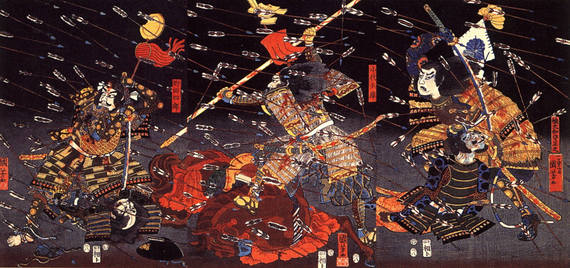My 11 year-old son takes me to a lot of movies, the kind boys like with all kinds of CGI effects, most recently The Hobbit. I may be at a disadvantage for having not seen the earlier movie or read the book, and being older and little slow, but I had no idea who was fighting whom or what was going on. The movie's electrifying scenes of dwarves, hobbits, elves, orcs, goblins and people (I think) mixing it up in midair were lost on me. Too much going on -- the experience was overstimulating, confusing, and excessive, all too quick to take in.
A still image allows you take your own time. A still image seems unchanging, but does indeed have movement -- created by your eyes' constant tracking, by the unfolding and shifting of attention, and by ongoing neurological processes within the eye and brain. You uncover meaning and find satisfaction through your own ability to pay close, critical attention; through patiently exploring an image; and through discovering patterns, relationships, and associations. We use the word "moving" to describe our emotional response. "There seems to be no end to what seeing is, to how tangled it is with living and acting," James Elkins reminds us. Much of the pleasure of looking at an image is in your own awareness of these processes taking place within you as you continue to look, and in your own control of them.
I'm sure one single frame from a battle scene in The Hobbit, placed in my hands, would have absorbed and satisfied me with its intricate detail, dramatic space, and impressive verisimilitude, the way 19th C Japanese woodblock prints do, on my own time.
Utagawa Kuniyoshi, 1798 - 1861, Battle of Shijonawate (image in the public domain).
